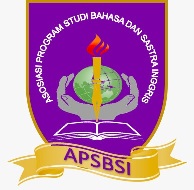CHARACTER EDUCATION VALUES IN READING SECTION OF E-ENGLISH TEXTBOOK FOR SENIOR HIGH SCHOOL STUDENTS GRADE XI
Abstract
The main purpose of the study is to find out what character values are integrated in reading section of the English e-book of Senior High School and in which part of the English e-book of Senior High School the character values are realized. In order to obtain the objective of the study, I did several steps. I selected the e-book and then the reading section was selected. After selecting the reading section, the character education values integrated in the reading section were identified. Then, I identified the character education values in the reading section components; whether they are integrated in reading texts or reading exercises. From the eighteen character values formulated by The Indonesian Ministry of National Education 2010, there are only seventeen of them covered in reading section of the e-book. These seventeen values are honesty, tolerance, democracy, hard work, creativity, environmental caring, social caring, discipline, patriotism, nationalism, respect achievement, loving peace, reading habit, independence, religious, curiosity, and friendly/communicative. One character value that is not covered in reading sections is responsibility. All the character values found are covered in both components of the reading sections. After analyzing, I would like to suggest for the next researcher who attempts to do the similar research as I do. He/she should analyze the textbook which is recommended by the Book Centre (Pusbuk) of the National Education Ministry (Depdiknas) so that his/ her research will have a great possibility to be used as a consideration to select a good textbook for teaching and learning processes at schools.References
Anderson, R. C., et al. (1985). Becoming a nation of readers. Washington, DC: National Institute of Education.
Atkinson, Mary and Jeanne Sturges. 2003. At Turning Point: The Young Adolescent Learner. Hampshire: Center for Collaborative Education.
Berg, Bruce L. 1989. Qualitative Research Methods for the Social Science. Undiana University of Pennsylvania: Allyn and Bacon.
Berkowitz, Marvin B, and Melinda C. Bier. 2005. What Works in Character Education. Missouri: Character Education Partnership.
Clark, R., & Ivani?, R. (1997). The politics of writing. London: Routledge.
Cortazzi, M. and Jin, L. (1999) Cultural mirrors: Materials and methods in the EFL classroom. In E. Hinkel (ed.), Culture in Second Language Teaching and Learning (pp. 196-219) Cambridge: Cambridge University Press.
Crawford, Keith. .2003. International Journal of Historical Learning, Teaching and Research. 3/2.
Deighton, L. C. 1971. Encyclopedia of education. New York: Crowell-Collier Educational Corporation
Doddy, Achmad, Ahmad Sugeng and Effendy. 2008. Developing English Competencies. Jakarta: Pusat Perbukuan, Departemen Pendidikan Nasional
Glaze , Avis E. 2008. Finding Common Ground: Character Development in Ontario Schools. Canada: Ontario.
Haynes, Charles C. and Oliver Thomas. 2001. Finding Common Ground: A Guide to Religious Liberty in Public Schools. Nashville: First Amendment Center.
Ismawati, Juliana. 2011. Meningkatkan Manfaat Buku Sekolah Elektronik untuk Pengguna. [accessed 03/12/13] Available at: http://bse31.blogspot.com/2011/12/meningkatkan-manfaat-buku-sekolah.html
Langenbeach, William. 1997. Textbook, The Encyclopedia of American, Vol 26.p.563.Connecticut: Grolier Inc.
Lestari, Ida Puji. 2012. Character Building in Junior High School English Language Textbooks: A Content Analysis. Thesis. Graduate Program in English Language Education, State University of Malang.
Lickona, Thomas. 1993. The Return of Character Education. Character Education. 51/3: 6-11
Lickona, Thomas. 2003. The Content of Our Character: Ten Essential Virtues. The Fourth and Fifth Rs: Respect and Responsibility. 10/1: 1-3
Miles, M.B., and Huberdan, A.M. 1984. Qualitative Data Analysis: a Source Book of New Methods. Newbury Park, CA: Sage.
Mujiyanto, Yan. 2009. Petunjuk Penulisan Skripsi. Semarang: Unnes Press.
Pantic, Natasa. 2006. Moral Education Through Literature. Edinburg: University of Edinburg.
Richard, Jack C. 2001. The Role of Textbook in a Language Program. Cambridge Rose, A. J. F. 2012. An analysis of the Values incorporated in the English Samachir Kalvi Text Book at the Secondary Level. Dissertation.
Reading (process). Online at http://en.wikipedia.org/wiki/Reading_(process). [accesed 03/25/12]
Ryan, Kevin and Thomas Lickona. 1992. Character Development in Schools and Beyond. Washington: Library of Congress.
Samani, Muchlas and Hariyanto. Pendidikan Karakter: Model dan Konsep. Bandung: Rosda.
Stedje, Lauree Beth. 2010. Nuts and Bolts of Character Education. Oklahoma: Character First.
Tajima, M. (2011). Ideological messages embedded in an EFL textbook. In A. Stewart (ed.).pp.329-336
Textbook. Online at http://www.merriam-webster.com/dictionary/textbook. [accessed 04/23/12]
Utomo, Erry. 2011. The Development of Character Education and Its Implementation at Educational Unit in Indonesia. Journal of Educational Research and Policy. 3/1: 26-36
Weddel, Kathleen Santopietro. 2009. How to Choose Good ESL Textbook. Colorado: Northern Colorado Professional Development Center
What is Character Education? Online at http://www.character.org/key-topics/what-is-character-education/. [accessed 05/13/12]
What is Reading Skills? Online at http://www-01.sil.org/linguistics/glossaryOflinguisticTerms/WhatIsReadingSkills.htm. [accessed 05/08/12]
What is Reading Comprehension. Online at http://www.k12reader.com/what-is-reading-comprehension/. [accessed 03/05/12]
.2010. Pengembangan Pendidikan Budaya dan Karakter: Pedoman Sekolah. Jakarta: Kementrian Pendidikan Nasional.


_.jpg)
_.jpg)




